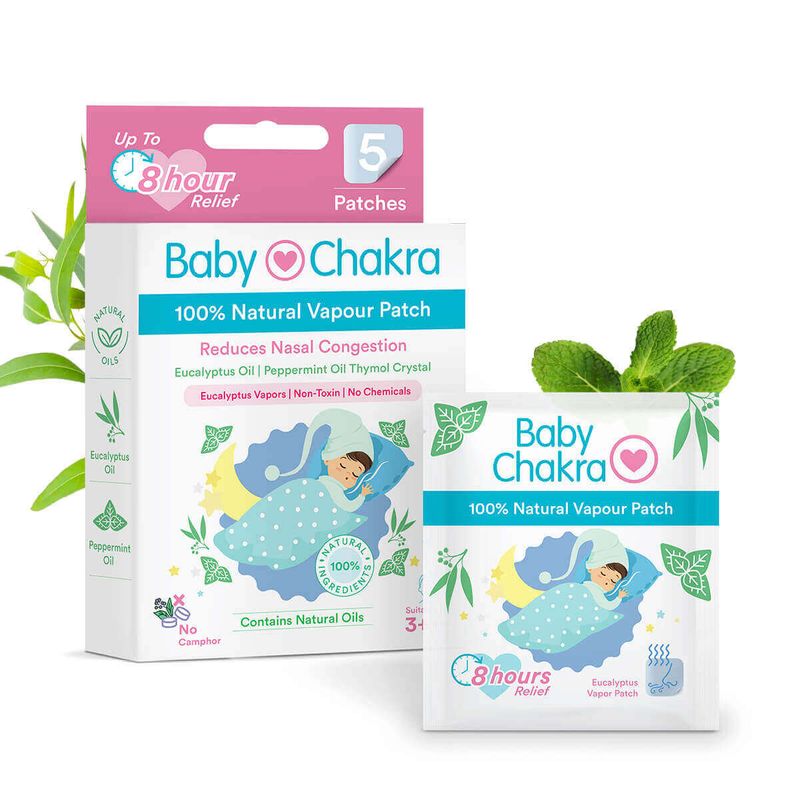
No More Blocked Nose This Monsoon Thanks To This Natural Vapour Patch
8 Aug 2022 | 3 min Read
Reema Shah
Author | 740 Articles
With the onset of monsoon also comes infections, cold, cough and nose blocks. That’s where a vapour patch is an easy-to-use relief patch, that helps to provide relief for babies from congestion in the nose. Unlike vapour rubs or nasal sprays, they do not irritate children and are safe to use.
However, with a wide variety of vapour patches available it can get challenging to pick a safe and natural vapour patch for your little one. Here’s your guide to picking a natural vapour patch for kids.
Natural Ingredients To Look For In A Vapour Patch
Eucalyptus Oil
Eucalyptus oil is decongestant in nature and is used for treating several problems including cold, asthma, sore throat, nasal congestion, sinusitis and bronchitis. It helps to soothe headaches and helps safely guard against respiratory problems in children. Eucalyptus oil has antiviral and antimicrobial properties.
Peppermint Oil
Peppermint oil is also a natural decongestant and helps to reduce fever while also fighting tough and silent colds. Inhaling the oil through a vapour patch can ease the symptoms of a blocked nose.
Ingredients To Avoid In Vapour Patch
Here are some ingredients that you must avoid when using a vapour patch for your little one-
- Toxins and chemicals can be harmful to the baby.
- Camphor – as it can irritate the baby’s skin.
- Petroleum jelly – It can be toxic for babies.
- Paraffins – can harm a baby’s delicate skin and can also cause dryness.
Why Pick A Natural Vapour Patch?
Natural vapour patches are free from toxins and are non-greasy. They are easy to use – all you need to do is peel the natural vapour patch sticker, take the sticky side of the patch and stick it in your baby’s surroundings, like baby’s clothes, blanket, pillow, bed etc. The long-lasting formulation of the patches helps to completely clear the congestion, ensuring that the mum and the baby get a sound sleep through the night.
Why Pick BabyChakra’s Natural Vapour Patch?
- It is India’s first-ever natural vapour patch for babies and kids
- Provides eight hours of effective relief
- Made with 100% natural ingredients which include peppermint oil and eucalyptus oil
- Does not have camphor which is toxic for young children
- Unlike vapour rubs, it is contactless
- Provides relief from nasal congestion
- The product has been co-created with paediatricians
- It is convenient to use

If your little one has a blocked nose, try BabyChakra’s natural vapour patches and see it work its magic!
Cover image credit – Cloudnine Hospitals
A


Suggestions offered by doctors on BabyChakra are of advisory nature i.e., for educational and informational purposes only. Content posted on, created for, or compiled by BabyChakra is not intended or designed to replace your doctor's independent judgment about any symptom, condition, or the appropriateness or risks of a procedure or treatment for a given person.

